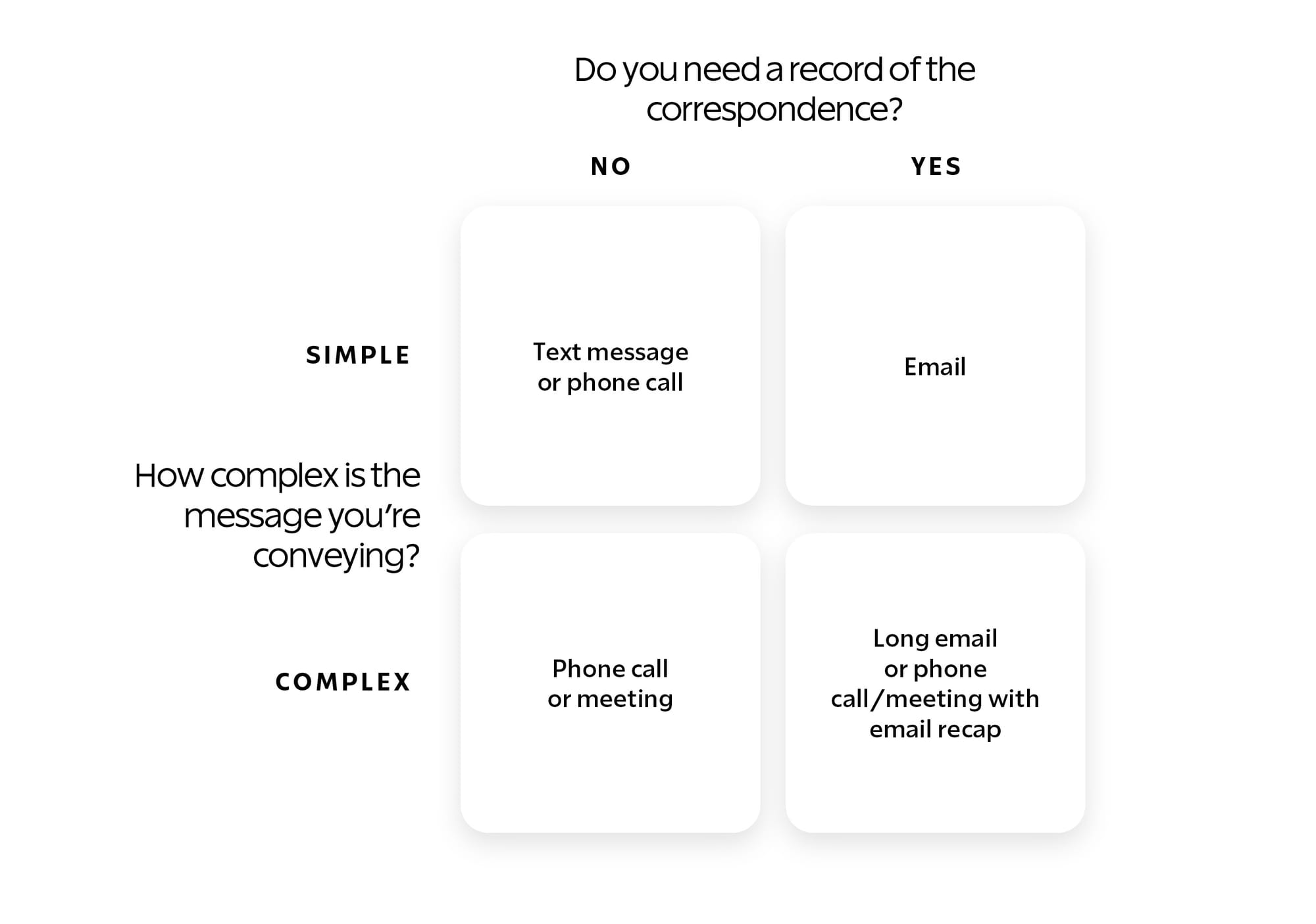The communication matrix
The lifeblood of every project is communication. How, when, and where you communicate, and whether you need a record of your correspondence, is key. Establishing a shared protocol up front will make everyone's life easier.

The Lifeblood of Every Project
One of the first things to establish in your long-term working relationships — with architects, interior designers, homebuilders, etc. — is how you’re going to communicate. Most folks have different preferences for tools (Email, WhatsApp, et al.) but what matters most is the principles that underlie where and how you communicate.
The two primary considerations to make when sending a message are the complexity of the message (simple vs complex) and whether or not you need a record of the correspondence (No, you don’t need a record vs Yes, you do need a record). This matrix is an easy way to visualize how these principles intersect:

Four Scenarios
The four scenarios are:
You have a simple message, but you don’t need a record
For brief, informative messages like this, a text message or phone call is fine. You’ll get your message across and don’t need to worry about storing a record of it. Examples of simple messages that don’t need a record are:
- Check-ins about project status
- Reminders about a meeting or event
- Brief answers to confirm a piece of info
You have a simple message, and you do need a record
Some items, even though they’re straightforward, need to be documented. An email is most effective for this scenario because your message will be (1) automatically timestamped, and (2) archived so it’s searchable for future reference. Examples of simple messages that need a record are:
- Written approval for a decision, purchase order, change order, etc.
- A response that involves detailed specifications, for example your choice of hardwood flooring material
- Confirmation of receipt for important documents such as invoices, change orders, or special project documents
You have a complex message, but you don’t need a record
Occasionally, you’ll have a lot of information that needs to be relayed, but you don’t necessarily need to keep track of every single detail. If your message requires more than 1–2 quick paragraphs of info, it’s probably best to schedule a phone call or in-person meeting. Examples of complex correspondences that don’t need a record are:
- Project updates that cover a lot of different areas
- Verification of lots of little details
- Clarification of an issue or specification that is too lengthy or difficult to explain in writing
You have a complex message, and you do need a record
These correspondences are among the most important to slow down and capture since they will likely have important bearing down the road. Examples of complex messages that need a record are:
- Decisions that involve detailed specifications
- Confirmations or approvals that require a signature or deposit
- Change orders that include a detailed scope, cost and potential changes to your contract
While this may seem onerous at first glance, it’ll become second nature quicker than you think. Once it does, the lifeblood of your project — how, when and where you communicate — will lock in and make every interaction more efficient, effective, and trustworthy.
Of course there may be deviations from this matrix. But as a general rule of thumb, I’ve found this approach to be extremely useful, not only for deciding when and how to convey a message, but also for establishing a shared protocol up front. Doing so helps others know what to expect, and also makes retrieval faster and more accurate.